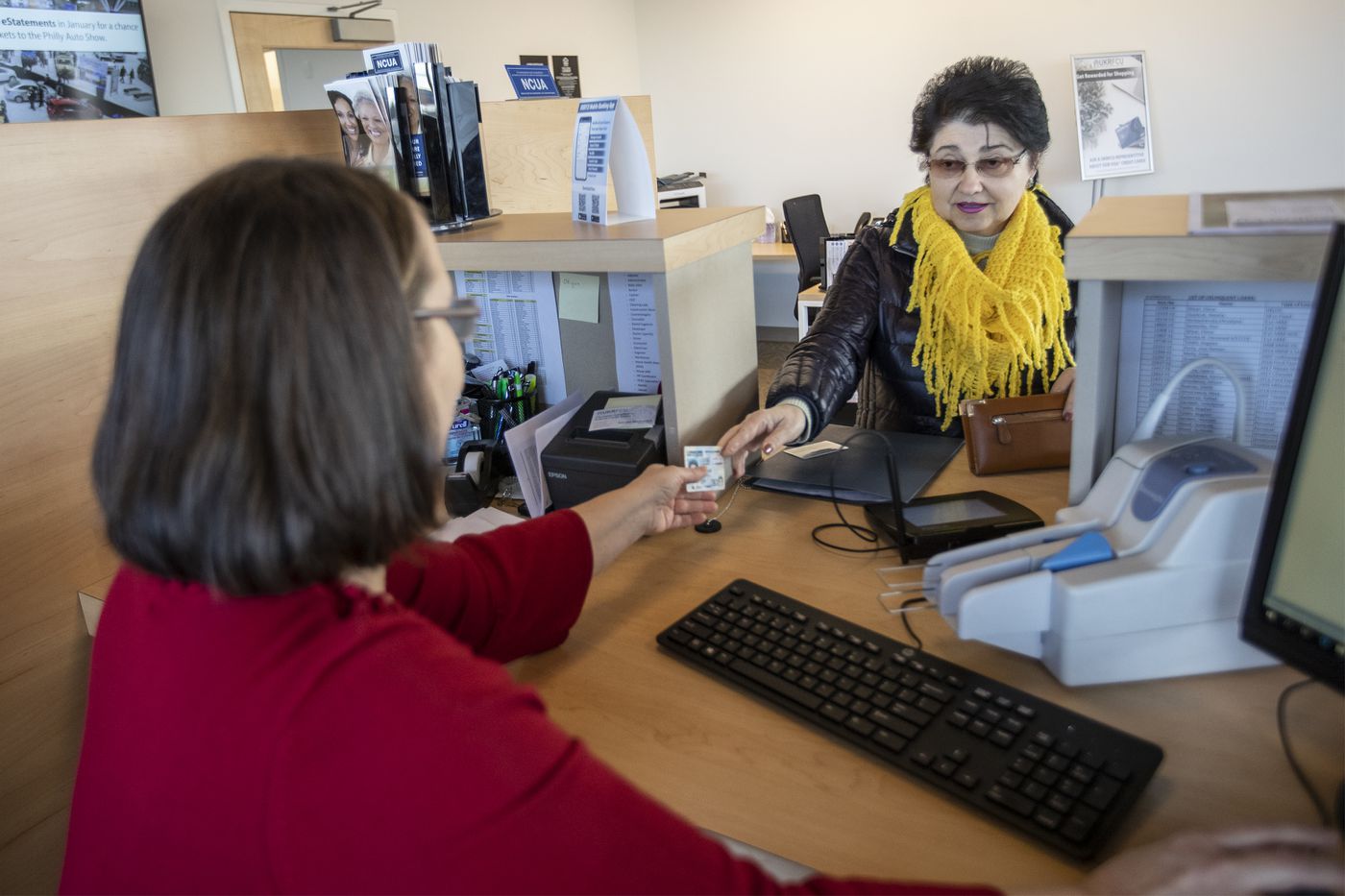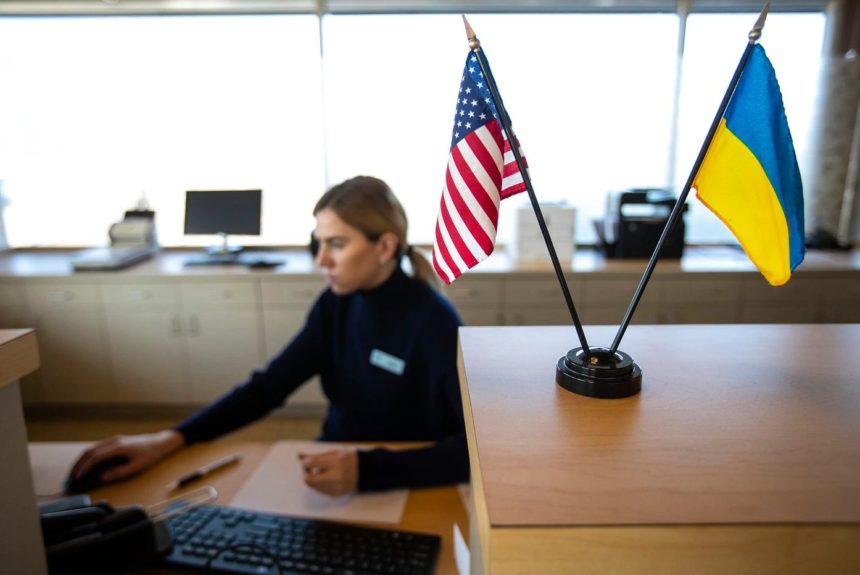Article Written by: Jeff Gammage from the Philadelphia Inquirer.
Original article link: https://www.inquirer.com/politics/philadelphia/ukrainian-selfreliance-federal-credit-union-trump-impeachment-20200203.html
Roman Petyk jokes that the membership application at the Ukrainian Selfreliance Federal Credit Union consists of two questions:
Are you Ukrainian? If not, would you like to be?
It’s a bit of whimsy from the board chairman of an institution that has stood near the heart of the Philadelphia region’s Ukrainian community for nearly 70 years, from its founding by postwar refugees to this modern moment when President Donald Trump’s impeachment trial has propelled Ukraine to the fore of the national conversation.
At the Ukrainian Selfreliance Credit Union — yes, Selfreliance is one word — depositors can get answers to their questions in Ukrainian, Russian, Polish, and English. If a member is at risk of bouncing a check, a staffer personally calls to alert him.
UKRFCU, as it’s known, has 11,000 members and $370 million in assets, up from 9,500 and $262 million in 2014, and it gets an “A” health grade from DepositAccounts, which tracks the financial well-being of banks and credit unions.
It also faces real challenges at a time when the lending and banking industry has grown ever more competitive, and the Trump administration is trying to squeeze off the flow of immigrants to the United States.
More than half the UKRFCU membership immigrated within the last 30 years. Under Trump, Ukrainians have become one of the top groups resettled as refugees in the United States, for reasons that aren’t fully clear.
“Our success depends to a large extent on the continued viability of the Ukrainian American community,” Petyk said. “We have to worry that we’re not going to have a continuing stream of new immigrants coming in. We pride ourselves on being able to help those people open their first savings account, buy their first car, buy their house. … Now, there’s this incredible hostility to immigrants.”
That drives UKRFCU to aggressively seek new customers, partly by trying to offer better interest rates than larger competitors. It focuses on developing the kind of savvy digital presence younger customers want. And always on being integral to the community, spending about $200,000 a year to sponsor and support everything from Ukrainian language schools to cultural events to sports leagues.
“Giving back is very important to us,” said UKRFCU president Mary Kolodij. “Growth for the sake of profit isn’t growth. I want us to grow. But I don’t want to grow so big that we stop being a credit union, which knows its members and helps them.”

Another big goal?
“Ensuring that we’re relevant now and in the future,” said Anatoli Murha, vice president of retail operations and business development. “We have to continue to speak with our members: What are they thinking, how do they identify with being a Ukrainian American, and can we help with that? They want to see an institution that’s going to help the community prevail and be active.”
Today, 67,000 Ukrainians live in the Philadelphia region. Many are paying close attention to how their ancestral homeland — a nation of 44 million the size of Texas — has become central in the impeachment investigation and trial.
And reverberations continue from Iran’s mistakenly shooting down a Ukrainian passenger plane that had just taken off for Kyiv, which killed all 176 people aboard in early January.
The credit-union story winds all the way back to 1947, when the Selfreliance Association of Ukrainian-Americans was established to help new arrivals in New York City. Chapters formed in other cities, and those service organizations sponsored credit unions.
It was an era when many traditional banks turned down loans to migrants who had no established credit history and lived in neighborhoods that lending executives saw as less desirable.
In 1952, according to a UKRFCU history, 233 Philadelphia Ukrainians pooled their savings and came up with $52,000 to start the credit union. They offered more than loans. They offered access to the American dream.
UKRFCU now operates a main and branch office in Feasterville, three branches in Philadelphia, and one each in Jenkintown and Trenton.
“Even though it’s called Ukrainian, they welcome everyone with open arms,” said Gregory Wojcik of Abington, a 15-year customer who works in pharmaceutical sales. “They’re great people to work with. End-to-end customer services, which is not commonly found.”
Wojcik, of Polish descent, said an ethnic component was important to him in banking. It’s not just that he can talk to tellers and managers in Polish, Ukrainian, or English — he speaks all three languages — but that credit-union operators share common community values of careful money management.
Credit unions and banks differ in subtle but important ways. Credit unions are member-owned, not-for-profit organizations, while banks are typically for-profit institutions that need to deliver returns to investors. Both accept deposits and make loans, though banks argue that they provide more services and products.
Of course, UKRFCU is small compared with such banks as JPMorgan Chase, Bank of America, and Wells Fargo, which hold billions in assets. The Polish & Slavic Federal Credit Union, based in New York, is believed to be the nation’s largest ethnic credit union with 90,000 members and $1.8 billion in assets.

Credit unions first took root in the United States during the Depression, when President Franklin Roosevelt signed the Federal Credit Union Act in 1934. The act established a regulated system that would help lower-earning people get credit.
Those early credit unions tended to be small, humble institutions, defined and limited by their “field of membership” — the legal definition of who was eligible to join. Typically, credit unions formed around a shared employer, school, church, or labor union.
Over time, credit unions have been able to expand those fields to where nearly everyone is eligible for membership. For instance, to join UKRFCU the connection can be as slight as having a library card from the Ukrainian Educational and Cultural Center in Jenkintown, or taking classes at Manor College, which was founded by the Byzantine Ukrainian Sisters of Saint Basil.
“We service the community — and their friends,” Petyk said. “We understood people would have a natural affinity to an organization that spoke their language. But they weren’t just going to join an organization for that. We had to offer good products.”
Ukrainians have come to the United States in distinct waves, starting about 1870, when poor farmers were drawn by the promise of paying jobs. About 240,000 settled in eastern farmlands or the anthracite coal-mining towns of Pennsylvania and West Virginia. In the early 1900s, as many as 250,000 more arrived, working for steel- and glass-makers in Philadelphia, Baltimore, Cleveland, and Detroit.
Ukrainian immigration paused at the start of World War I, and all but stopped after Congress set limits on migrants. At the end of World War II, tens of thousands of displaced Ukrainians came to this country. The Soviet-imposed Iron Curtain soon cut off immigration for four decades, ending only with the fall of the Berlin Wall in 1989 and official Ukrainian independence in 1991.
Today, about a million Ukrainians live in America. That includes 52,000 people of Ukrainian ancestry and an additional 15,000 Ukrainian immigrants who make their homes in Philadelphia and the surrounding suburban counties.
Many depend on UKRFCU.
When people ask, “’Are you a Ukrainian organization?’ I say no,” said Murha, the vice president. “We’re first a financial institution. We are regulated. Second, we just happen to have the majority of our clientele are Ukrainians.”


